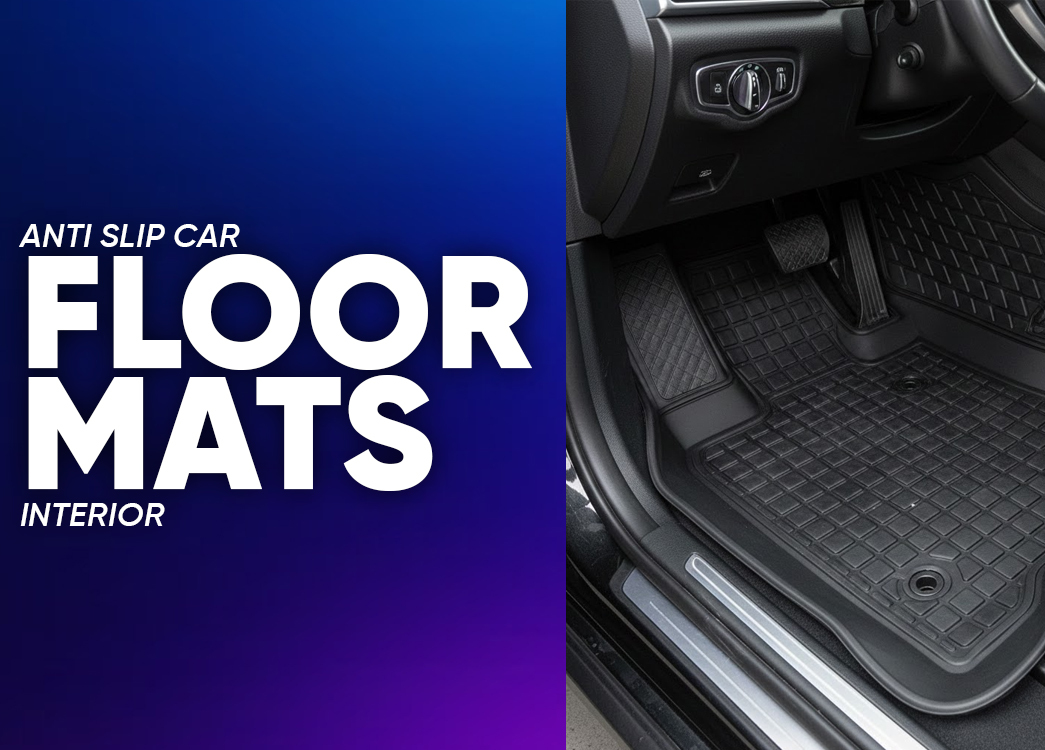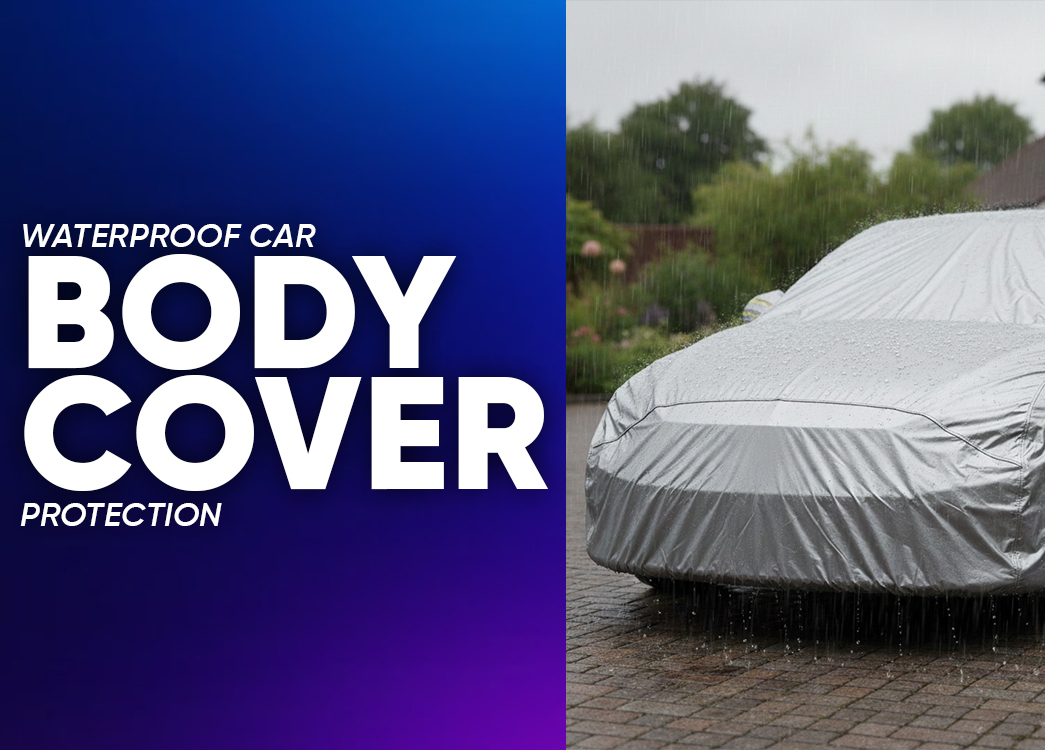
By Guest Author On 23-07-2025 at 12:57 pm
How to Use a Car Puncture Kit: Quick and Easy Guide
A flat tire can ruin your day, but with a tyre puncture kit in your car, you can be back on the road in no time. Whether you’re stranded in the middle of nowhere or just need a quick fix, this lifesaver can make all the difference. Let's dive into how to use it effectively, step by step.
What’s in a Car Puncture Kit?
First things first, let’s talk about what you’ll typically find in your kit. Most kits are packed with all the tools you need to get the job done without the hassle of waiting for roadside assistance. Here’s a rundown of the basic contents:
Rubber Patches - To seal the puncture and prevent air from escaping.
Rasp Tool - Used to clean and enlarge the puncture hole for a better fit.
Insertion Tool - For inserting the rubber plug into the puncture.
Tyre Repair Glue - Sometimes used to strengthen the repair.
Instructions - Always handy for first-timers.
Knowing what’s inside the kit will help you handle the repair faster when needed.
Step-by-Step Guide to Using Your Car Puncture Kit
1. Ensure Safety First
Before you start fixing the puncture, ensure you’re parked on a flat, stable surface away from traffic. Turn on your hazard lights and put the car in park. Using a car kit safely is crucial to avoid injury.
2. Locate the Puncture
Identify the puncture. If it’s not immediately obvious, try listening for the sound of air escaping. In some cases, you may need to inflate the tire a bit to pinpoint the exact location.
3. Remove Any Debris
Before you start repairing, check the hole for any dirt or debris. Use the rasp tool to clean the puncture. The better the hole is cleaned, the better the patch will stick.
4. Insert the Rubber Plug
Now, take the insertion tool from your puncture kit and thread the rubber plug through the tool. Then, insert the plug into the puncture hole. Push it in until the rubber seal is snug. Make sure it’s centered to avoid uneven patches.
5. Trim the Excess Plug
Once the plug is inserted, pull out the insertion tool. Use a knife or scissors to trim the excess plug. This will help keep your tire balanced and prevent any extra friction on the road.
6. Inflate the Tire
After the puncture is sealed, inflate your tire to the recommended pressure. Don’t forget to check for leaks. If the tire holds the air, you’re good to go!
7. Drive Carefully
Although the repair should hold for some time, it’s best to drive carefully. If possible, head to a professional to replace or properly patch the tire as soon as possible.
Why You Need a Tyre Puncture Kit in Your Car
It’s always a good idea to keep a tyre puncture kit in your car, especially if you often drive in remote areas or places where roadside assistance may not be readily available. Here are a few reasons why having one is essential:
1. Quick Fix on the Road
A car puncture kit gives you the freedom to repair your tire without waiting for help. It’s a quick, temporary solution until you can get your tire professionally repaired or replaced.
2. Avoid Costly Towing Fees
With a puncture kit in your car, you can avoid the hassle and cost of calling a tow truck. You can quickly fix the issue and continue your journey without extra expenses.
3. Emergency Preparedness
In case of an emergency, having a tyre puncture kit ready to use could make all the difference. You’ll have everything you need at hand, preventing unnecessary stress and frustration.
What to Look for When Buying a Car Puncture Kit
Not all car kits are made the same. When buying one, make sure it contains the essential tools for a quick and effective repair. Look for kits that are compact, easy to use, and come with clear instructions. It’s also important that the kit has quality rubber plugs, as cheap ones may not provide a reliable seal.
1. Check the Kit’s Size
Choose a kit that fits in your car without taking up too much space. It should be small enough to store in the trunk, yet large enough to hold all the tools needed for a successful repair.
2. Quality of Materials
Always opt for high-quality car accessories. The plug should be durable, and the tools should be sturdy enough to handle the job efficiently. Cheap kits may not give you the results you need.
3. Additional Features
Some advanced kits come with additional tools, such as a mini air compressor or tire sealant. These added features can be useful for more serious repairs or if you're in a pinch.
Final Thoughts on Using Your Car Puncture Kit
A car puncture kit is a must-have for any driver. Whether you're facing a flat tire on the highway or at home, knowing how to use it can save you time and money. Remember, this kit is meant for temporary repairs, so always get your tire professionally fixed after using it.
Frequently Asked Questions (FAQ) About Car Puncture Kits
1. What is included in a car puncture kit?
A typical car puncture kit includes rubber patches, a rasp tool, an insertion tool, tyre repair glue, and instructions. These tools help you seal the puncture, clean the hole, and insert the rubber plug for a quick fix.
2. How do I use a tyre puncture kit?
To use a tyre puncture kit, start by ensuring your car is in a safe location. Locate the puncture, clean the hole with the rasp tool, and insert the rubber plug using the insertion tool. Afterward, trim the excess plug and inflate the tire to the recommended pressure.
3. Can I drive on a tire after using a puncture repair kit?
Yes, you can drive on the tire after using a puncture kit, but it’s a temporary solution. Drive cautiously and head to a professional to get the tire properly repaired or replaced as soon as possible.
4. Why is it important to have a car puncture kit in my car?
Having a car puncture kit in your vehicle ensures you’re prepared for emergencies. It allows you to quickly fix a flat tire, avoiding long waits for roadside assistance or expensive towing fees.
5. How long will a puncture repair from a kit last?
The repair from a tyre puncture kit is temporary. It should hold long enough to get you to a tire shop for a proper fix, but it’s not meant for permanent use. Always check the tire pressure after using the kit to ensure the plug is holding.
6. What should I look for when buying a puncture kit?
When purchasing a car puncture kit, ensure it includes essential tools like rubber plugs, a rasp tool, and an insertion tool. Check that the materials are high-quality, and the kit is compact enough for easy storage in your car.
7. Can I use a puncture kit on all types of tires?
Most tyre puncture kits work for standard tires, including those on cars and motorcycles. However, for larger tires (such as truck or heavy-duty tires), it’s best to consult a professional or use specialized equipment.
8. How do I know if my puncture repair is effective?
Once the puncture is sealed, inflate the tire to the correct pressure and check for leaks. If the tire holds air without any noticeable loss, the repair is effective for temporary use. Always monitor the tire and get a professional repair as soon as possible.
9. Is a puncture repair kit suitable for all tire punctures?
A tyre puncture kit works best for small, clean punctures caused by nails, screws, or other sharp objects. It may not be effective for sidewall damage or large gashes. For such cases, it’s best to visit a tire specialist for a proper replacement or repair.
10. How can I prevent tire punctures?
While you can’t avoid every puncture, you can take precautions such as regularly checking tire pressure, avoiding debris on the road, and inspecting tires for wear and tear. Proper tire maintenance can help reduce the risk of punctures.
Related posts









